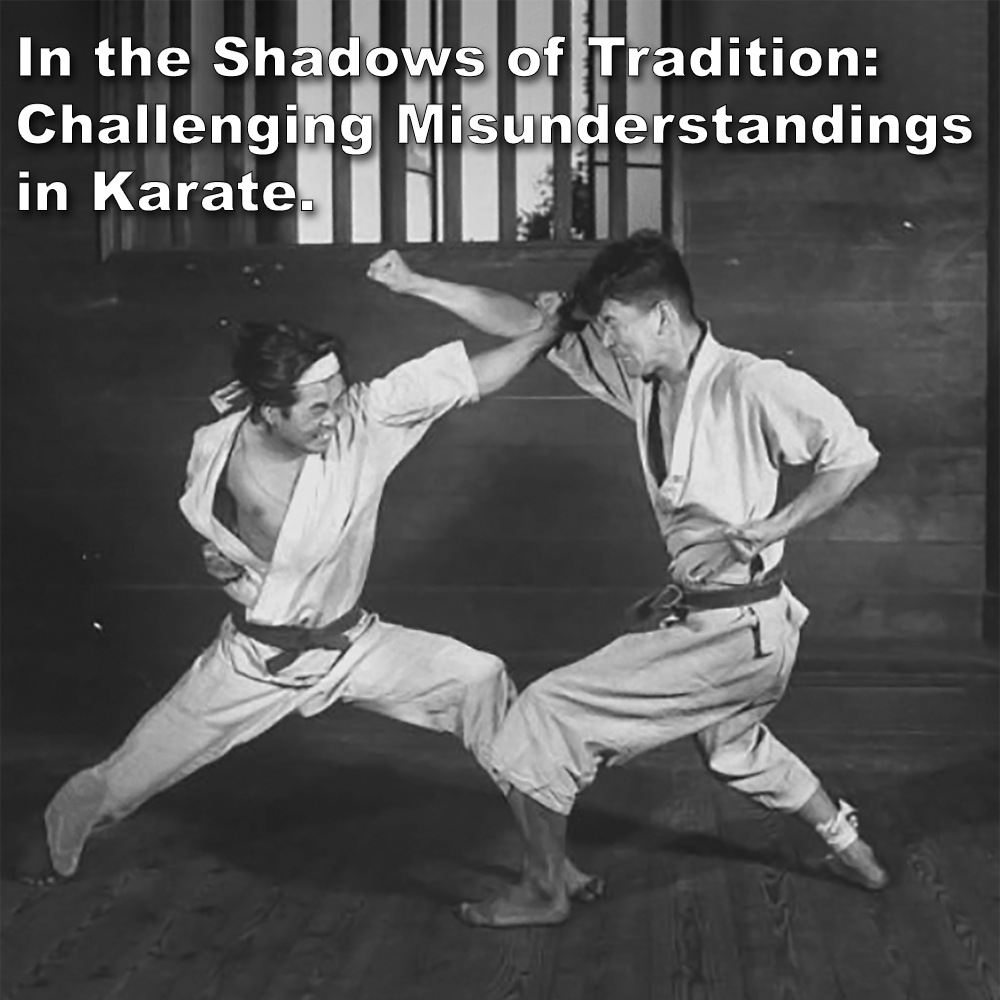
In the Shadows of Tradition: Challenging Misunderstandings in Karate.
Posted by ADAM CARTER on APR 30, 2024

In the Shadows of Tradition: Challenging Misunderstandings in Karate.
(2 minute read)
Karate often finds itself mired in misconceptions and misunderstandings.
How many times have you watched a video or responded to a comment and cringed at what you have just witnessed or read?
Unlike other arts like MMA, Judo, Boxing, jiu-jitsu, etc., which seem to have clear purposes and methodologies, karate – and some of its instructors, appear to be struggling with clarity.
Karate can trace its origins back to Okinawa, where it was influenced by various cultural and historical factors. Over time, as it spread to mainland Japan, and across different countries, its original purpose, principles, and techniques have been diluted, changed, or misinterpreted, leading to confusion among practitioners and instructors alike.
To add to this, many practitioners have an idealized image of a sensei. Once they give their loyalty to an instructor, it may become blind obedience and belief.
Those that believe in their karate, believe in their sensei, believe without question. After all, their sensei practiced their skills with ferocity, accuracy, and mastery.
However, it’s all too common for a master to be “confused” as well. (Heresy, I know)
The diversity within karate, with its numerous styles and lineages, can contribute to misunderstandings too. Each style may emphasize different techniques, training methods, and philosophies, causing practitioners to encounter conflicting teachings or interpretations.
For the new student, deciphering the qualifications and teaching abilities of an instructor can be a daunting task.
And don’t get me started on the “McDojos”, where profit and belt promotions often take precedence over any kind of effective training.
Some approaches to karate training may not always prepare practitioners for real-world self-defense or combat situations, and a great deal of misunderstanding comes from this alone.
Without proper integration of partner drills and practical application, students often struggle to understand how to apply their techniques effectively. And the same can be said of some instructors who have been in the art for a very long time.
Many karate schools, especially those that profess to follow a lineage or legacy of some kind, often resist evolving their training methods or integrate other concepts. This resistance to change can lead to stagnation and a reluctance to explore new approaches, further perpetuating misconceptions about karate’s effectiveness.
Despite these challenges, traditions, rituals, and practices within the martial arts hold deep meaning when viewed through the lens of their historical and cultural context. Without this understanding, their significance is lost or misinterpreted.
Similarly, in the dojo, students who grasp the context behind techniques and information can make stronger connections and apply their knowledge more effectively.
Martial arts teach us there’s often more than one way to approach a situation, and our initial understanding might be incomplete without considering the broader context.
In my opinion, it’s important to keep learning, to adapt, to keep an open mind, leading to a deeper understanding, and ultimately, fewer misconceptions of what karate actually is.
